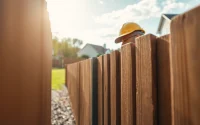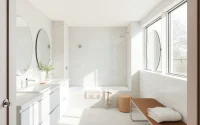Comprehensive Termite Treatments: Effective Solutions for Homeowners
Understanding Termite Treatments
Termites are notorious for their destructive capabilities, and they cause significant damage to homes and properties each year. Whether you’re a homeowner or a property investor, understanding termite treatments is essential for effective management and prevention of infestations. This comprehensive guide will delve into termite types, treatment options, and preventive measures to help you safeguard your property from these pests.
What Are Termites and Their Risks?
Termites are social insects that primarily feed on cellulose found in wood, paper, and some other organic materials. They are often referred to as “silent destroyers” because they can infest a structure for months or even years without being detected. The primary types of termites include:
- Subterranean Termites: These are the most common type in the U.S. They build their colonies underground and can access homes through cracks in foundations.
- Drywood Termites: Unlike subterranean termites, drywood termites live within the wood they consume. They do not require contact with soil and can infest older, dry wood in a structure.
- Dampwood Termites: These termites require higher moisture levels to thrive and typically infest decaying or water-damaged wood.
The risks associated with termite infestations are significant. Structural damage caused by termites can lead to costly repairs, decreased property values, and potentially dangerous living conditions. Early detection and appropriate treatment are critical in mitigating these risks.
Types of Termite Treatments Available
There are several effective termite treatment methods available today, each with advantages and considerations. Understanding these options will help you make informed decisions:
- Liquid Soil Treatments: This method involves applying a chemical barrier around the perimeter of the home. It effectively prevents termites from entering and can eliminate those already present in the soil.
- Bait Systems: These consist of bait stations placed around the home that contain food attractive to termites mixed with a slow-acting insecticide. The termites ingest the bait and return it to their colony, effectively killing the queen and other members.
- Direct Wood Treatment: This involves the application of insecticides to wood surfaces to kill termites present in wooden structures. It’s often a preferred method for smaller infestations.
- Fumigation: For severe infestations, whole-structure fumigation may be necessary. This involves covering the building with tenting and releasing a gas that penetrates all wood surfaces.
Importance of Early Detection
Detecting a termite infestation early is critical for minimizing damage and treatment costs. Homeowners should look for signs such as:
- Frass (wood-colored droppings), which resembles sawdust
- Clicking sounds within walls, indicating the presence of soldiers
- Swarmers or discarded wings around windows and doors
- Soft, hollow-sounding wood when tapped
Regular inspections by professionals can vastly improve the chances of early detection, which is essential for effective treatment.
Methods of Termite Control
Soil Treatments: A Barrier Against Infestations
Soil treatments are one of the most common methods of termite control. These treatments create a chemical barrier in the soil around and beneath a structure, making it difficult for termites to access the home. The types of soil treatments include:
- Liquid Termiticides: Applied during the construction phase or as a service treatment, liquid termiticides are effective at repelling termites for years and can eliminate existing colonies in the area.
- Termite Reticulation Systems: These service systems provide the flexibility of retreatment without disturbing the landscape. They are especially useful in maintaining pest control measures over time.
Wood Treatments: Protecting Internal Structures
Wood treatments directly target infested wood. These methods can be particularly effective in smaller infestations:
- Pressure Treatment: New wood can be pressure-treated with insecticides to provide long-lasting protection.
- Surface Treatments: Existing structures can be treated with borate solutions, which penetrate the wood and act as both a preservative and insecticide.
These treatments not only help manage infestations but can also prolong the lifespan of wooden structures.
Bait Systems: Monitoring and Control
Bait systems offer an innovative approach to termite control and are unique in that they monitor and kill termite populations at the source. They consist of a series of bait stations that are placed around the perimeter of the structure. How they work includes:
- The bait itself is usually comprised of cellulose material mixed with a slow-acting insecticide. When termites feed on this bait, they transport it back to their colony.
- Once the bait is ingested, it disrupts the termite’s life cycle, leading to the eventual collapse of the entire colony, including the queen.
Bait systems can be a more environmentally friendly option, as they target specific species and use less pesticide overall.
DIY Termite Treatments vs. Professional Services
When to Consider DIY Methods
For small infestations or preventive measures, some homeowners may consider do-it-yourself (DIY) methods. Common DIY treatments include:
- Using borate-based sprays, which can be applied to exposed wood surfaces.
- Setting up termite baits that can attract termites and reduce their population.
- Using moisture barriers in basements and crawl spaces to reduce appealing environments for termites.
However, it is essential to consider the severity of the infestation, as DIY methods may not be effective against larger or more established colonies.
Benefits of Hiring Professionals for Termite Treatments
When facing significant infestations or the need for long-term prevention, hiring a professional pest control service is advisable. Professionals provide:
- Thorough inspections to identify all potential entry points and nesting areas.
- Access to effective termiticides and bait systems that are unavailable to the general public.
- Ongoing maintenance and monitoring to prevent future infestations.
Moreover, professional pest control operators have the training and expertise to effectively implement treatments that are both safe and effective.
Cost Comparisons: DIY vs. Professional
When considering the cost of termite treatments, DIY solutions may initially appear less expensive. However, they often require multiple applications and do not guarantee effectiveness. Professional treatments generally involve a higher upfront cost but may save money in the long run by preventing extensive damage and the need for structural repairs. A breakdown of typical costs includes:
- DIY Treatments: $20-$100 for basic products like sprays or bait.
- Professional Inspections: $100-$300, which may be deducted from treatment costs if hired.
- Full-Service Treatments: Ranging from $1,000 to $4,000 depending on the severity and size of the infestation.
Making the right choice involves evaluating the extent of the infestation, potential damages, and the effectiveness of various methods.
Preventative Measures for Termite Infestation
Home Maintenance Tips to Avoid Termite Problems
Preventing termite infestations begins with proactive home maintenance. Simple steps that homeowners can take include:
- Sealing cracks and crevices in foundations, walls, and around pipes to limit access points.
- Keeping wooden structures away from the soil, such as allowing space around wood piles and deck posts.
- Regularly checking attics and basements for signs of moisture or mold that may attract termites.
Landscaping Strategies for Termite Prevention
Landscaping around your home plays a crucial role in termite prevention. Effective strategies include:
- Avoiding wood mulch near the foundation—using gravel or stone instead.
- Trimming trees and shrubs to eliminate direct contact with your home.
- Ensuring that gutters and downspouts direct water away from the structure’s foundation.
Seasonal Checks: Staying One Step Ahead
Regular inspections and maintenance are key to staying ahead of potential infestations. Homeowners should schedule seasonal checks that focus on:
- Assessing the moisture levels in basements and crawl spaces.
- Checking for any wood damage or visible signs of termite activity.
- Monitoring the vicinity for conducive conditions such as wood debris.
Keeping an organized maintenance schedule increases the chances of spotting problems before they escalate into costly repairs.
Evaluating the Effectiveness of Termite Treatments
Signs of Successful Treatment
After implementing treatments, homeowners should look for signs of improvement, including:
- A decrease in visible termite activity, such as frass or swarming.
- A stabilization of wood conditions; no further softening in affected areas.
- Feedback from follow-up inspections indicating no further infestations.
Follow-up Inspections: Why They Matter
After treatment, regular follow-up inspections are critical. These inspections can help:
- Identify any new infestation areas early on.
- Assess the continued efficacy of the treatments used.
Experts recommend scheduling these inspections annually, though this can vary based on the severity of the previous infestation and the surrounding environment.
Adjusting Treatments Based on Evolving Threats
As environmental conditions change, so may termite behaviors. Homeowners should remain flexible and consider adjusting treatments based on:
- Changes in humidity and moisture levels that may impact termite activity.
- Feedback from ongoing monitoring systems or bait stations.
- Local developments or changes in landscaping that may create new entry points.
Staying informed about local pest activity and maintaining communication with pest control professionals ensures timely adjustments to treatment plans.

